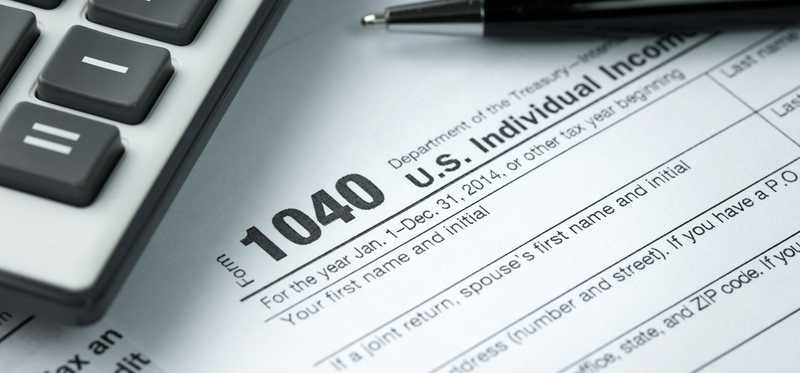19 Ways to Save Money in 2019

19 Ways to Save Money in 2019
Reasons to save
Why do you need to save money? Well, let us count the ways. First, in the short term, almost half of all Americans couldn’t raise $400 if they needed it for a sudden emergency. The fact is, life is full of sudden emergencies, from car repairs to sprained ankles. You need money to take care of life’s unexpected twists and turns.
So the first reason to save money is to have it in case of sudden-and-unplanned-but-necessary events. Without this kind of cushion, you’re going to have to turn to credit cards or a personal loan when you need extra cash. Debt repayment on these, in turn, can impair your ability to save long term even more, so you wind up falling further and further behind.
Second, the achievement of future plans, from a down payment on a home to retirement, require consistent savings. You need a savings plan to realize your long-range financial goals. If you’re spending every cent you earn, you’re not going to have much luck attaining your financial dreams.
Third, there’s no reason to spend money unnecessarily, so keeping an eye on ways to save will let you live well, but without paying more than you need to. That’s a recipe for good financial health overall.
Previous
Next

1. Monitor your expenses
To start saving effectively, there’s no substitute for knowing how much you spend. You might attempt to cut back on eating out, for example, but without knowing exactly how much cash you usually drop at restaurants, you won’t have a firm grasp on how much -- or even if -- fewer meals out actually saves you money.
Use a spreadsheet, an app, or even note cards to keep track of how much you spend in a month. Jot down the amounts as you spend them. Divide expenditures by major category, such as housing, transportation, utilities, food (groceries and eating out), healthcare, clothes, entertainment, debt repayment, retirement savings, and investments.
After a month or so, sit down and review your expenditures. Where could you minimize spending to put into savings? Is there anything that can be cut entirely? Continue to monitor your expenses to make sure you’re saving going forward, too.
Previous
Next

2. Pay down credit card debt
Americans currently owe more than $1 trillion on credit cards, according to the U.S. Federal Reserve. The average amount of individual credit card debt was $6,354 in 2017, according to Experian. The current average interest rate on credit cards is 17.66%, which means that the average person is paying $1,118 yearly just in interest on credit cards alone, or approximately $93 per month.
Someone who owes the average and made minimum monthly payments of $254, for example, would take 32 months to repay the debt, and pay more than $1,628 in interest during that time. Clearing up debt can result in those principal and interest payments being yours to save, rather than belonging to the credit card company.
If you owe on more than one credit card, there are two primary methods to repay debt. The first is the snowball method, where you devote all the money you can to repaying the card with the lowest balance first. Once that is paid off, you roll that payment amount to the card with the next lowest balance. Eventually, your payments “snowball” to eliminate debt aggressively.
The second is the debt avalanche method, where you devote all the repayment money you can to the credit card with the highest annual percentage rate (APR). Once the highest interest-rate debt is paid off, roll the initial repayment to the card with the second highest interest rate. The avalanche method can be especially helpful if your cards have higher than average interest rates.
Previous
Next

3. Buy a used car rather than a new one
Guess how much a new car costs. The average is $31,000. The average loan payment is $500 every month and takes almost six years to pay off. That’s a hunk of change, and you can save at least part of it by buying a high-quality used car rather than a brand new one. You want to minimize both the amount of any car loan and the time you’re paying it -- and you can with a used car.
New cars depreciate enormously, by up to 46% in the first three years. So by the time the fourth year dawns, you’re still paying the $500 loan amount on a car worth slightly more than half as much as you paid for it.
If you buy a used car, a lot of the depreciation is already factored in. A four-year old vehicle may be selling for not much more than half the price of a new one, for example, and judicious shopping around can find one in good repair with relatively low mileage. One method is utilizing Consumer Reports Annual Reliability Survey, which provides facts and figures on specific makes and models, including cost and extent of repairs. You can also check out prices for good to excellent used cars using the Kelley Blue Book.
If you have the cash to buy a good used car outright, you can save on loan and interest repayments altogether. Doing so frees up a lot of cash that you can then funnel into savings.
Previous
Next

4. Minimize your taxes
We all owe taxes, but be sure to take advantage of ways to lower your tax bill. Americans leave a surprising amount on the table come tax time. Approximately 20% of us eligible for an earned income tax credit, for example, don’t claim it.
This year, the situation is more complicated than usual because the Tax Cuts and Jobs Act signed into law in late 2017 applies to the 2018 taxes you’ll be filing in April -- and the changes are some of the most significant in 30 years. The standard deduction has nearly doubled, for example, to $6,350 to $12,000 for single filers and from $12,700 to $24,000 for married people filing jointly. Yet the complete elimination of the personal exemption, which was $4,150 in 2017, complicates the picture and may result in less of a tax savings than it seems at first blush.
Taxpayers have a choice of taking the standard deduction or itemizing. It makes financial sense to itemize if your deductions add up to more than the standard deduction amount. Look at your situation carefully, and don’t overlook common deductions. This year, healthcare costs of more than 7.5% of your adjusted gross income are deductible. So is mortgage interest on a house of up to $750,000. State and local taxes, including property taxes, are all deductible, up to a maximize of $10,000. Interest on student loans is deductible.
It may be worth consulting a tax professional to make sure you are saving the maximum amount on taxes.
Previous
Next

5. Participate in a matching 401(k)
Of employers that offer 401(k)s, 78% offer a matching plan. You can save more retirement money by participating in it. How? Well, a match means that your employer will contribute a defined amount of money for every amount you contribute. Generally, participants need to contribute from 4% to 6% and receive a match of 50% or 100% of their contribution.
So if you make $65,000 and contribute 6%, your contribution totals $3,900 in a year. If your employer matches 100%, you’re getting an additional $3,900 in retirement savings for free, because it didn't come out of your own pocket. It’s a cliché, but not participating in a matching 401(k) plan really is leaving money on the table. Savings money.
Previous
Next

6. Review your cable plan
Yes, we live in a golden age of television. But it may be possible to have access to the splendors of the age while paying considerably less than you do now.
Many cable packages cost as much as $100-plus per month. Yet services like YouTube TV, Dish's Sling TV, AT&T's DirecTV Now, and Hulu Live TV can cost less than half that, while still delivering a wide selection of channels and sports.
Not only that, but video streaming services like Netflix, Hulu, or even Amazon Prime Video can be had for less than $15 per month. Each provides an almost overwhelming amount of movies, television, and original content. Bonus tip? Don’t overlook your local library. Many have great DVD selections, for free.
Previous
Next

7. Drink fewer cups of expensive coffee
If you’re in the habit of swinging by a $5.00-per-latte emporium on your way to work or jog, reduce your number of visits or cut them out entirely.
This is such standard “how to save money” advice that it’s become a bromide. But the fact is, you can get a jolt of Joe by brewing your coffee at home for $0.25 or less. The savings differential between $0.25 and $5.00+ per day is what makes this tried-and-true advice.
If you totally love the way your local coffee shop brews caramel macchiatos, all is not lost. Make a plan to go there two times a week versus five. You can still likely save more than $15 per week, which adds up to $780 per year. Once you envision the savings as providing sufficient bucks for a short vacation, the siren call of coffee may become much less strong.
Previous
Next

8. Lower your car and home insurance costs
Insuring your possessions like cars and home makes a lot of financial sense, since insurance will reimburse you for losses in case of accidents or theft. But insurance premiums, the amount you pay periodically to have insurance, can also add up steeply. Car insurance costs range between $1,114 and $1,242, on average, according to the American Automobile Association (AAA). Home insurance cost an average of $1,173 in 2015, according to a National Association of Insurance Commissioners study published by the Insurance Information Institute.
Fortunately, there are many ways to lower your premiums. First, many insurers will offer a discount if you fill all your insurance needs with them, a practice called bundling. So if you have car insurance with one company and home insurance with another (not to mention life, boat, small business, or other insurance), it’s worth contacting your insurance provider to see if bundling could save you cold, hard cash.
Second, consider raising your deductible. The deductible is the amount you pay out of pocket in the event you make a claim. For both car and home insurance, a higher deductible will lower the amount of the premium, sometimes substantially so. While you will, of course, pay more if you need to file a claim, claims are usually infrequent enough so that you are likely to save on premium payments in most years.
ALSO READ: 10 Hard-to-Believe (and Interesting!) Insurance Facts
Previous
Next

9. Cut down on housing costs
Housing is flexible: you can live in an attic bohemian style or enjoy a 500-acre spread in an urban enclave or a secluded cove. But every decision you make has repercussions on your finances.
First, assess your housing situation and where you could profitably save on costs. If you live in an area of high-cost real estate like San Francisco or New York, for example, would it be possible to move somewhere with lower costs? Many places in the Midwest and South have far less expensive housing costs, according to the National Association of Realtors.
Second, assess your renting versus buying decision. While home-buying certainly takes more of an initial outlay than renting, it can save money in the long term, especially once tax advantages and the building of equity are factored in. Conversely, for some homeowners, renting might become more appealing in the wake of the new tax law. Property tax deductions are capped, which may make owning less financially advantageous in high property-tax states.
Third, look at the space you have versus the space you need. If you downsize, you could save on monthly costs. Could you move into a smaller place? Into a condominium rather than a house? Share the space with roommates?
Previous
Next

10. Change your commute
It may be very possible to save by changing up your commute to work. If cars are your go-to, check into how much public transportation in your area costs vis-à-vis a car. Be sure to factor in maintenance and average car repair costs as well as gas when determining the comparison.
Check to see whether your employer has a plan that would save you money. Some organizations offer discounts on monthly passes for public transit or allow employees to buy passes pretax, in order to encourage use of public transportation. Buying pretax can save you money on taxes.
Sharing rides in another time-tested way of saving on work commutes. Many companies have a rideshare program, as do some states, counties, and cities. In the latter, people wanting to share rides can enter their information on a website in order to find a match.
Do you live in an area and within a reasonable distance where walking or biking is feasible? If so, you can save on gas and car wear-and-tear by instituting a mini walk-a-thon or bike-a-thon at least a few times per week.
Previous
Next

11. Socialize inexpensively
There are all kinds of ways to socialize without spending serious money. Ask people to an at-home dinner party. It can be much cheaper than a restaurant -- and also, planned right, the cooking, wine uncorking, and so on can be part of the fun. Or throw a monthly game night potluck. That way, you prepare just one item and enjoy the cooking and creativity of all the participants who bring the rest.
Make the outdoors the place for your social whirl. Hiking and biking create opportunities to talk and have fun for no more than the cost of getting there.
Don’t overlook places to partake of culture inexpensively. Many museums have specific days or evenings when admission is free or offered at reduced cost. Concerts and plays are cheaper if afternoon matinees are available. College campuses often offer concerts, plays, and lectures at very affordable prices or for free.
Previous
Next

12. Contribute to pretax healthcare expense plans
If your employer offers a flexible spending account (FSA) or healthcare savings account (HSA), you can save money by participating.
FSAs allow you to save up to $2,700 pretax in 2019 for healthcare costs, including premiums, deductibles, and copays. You therefore save on income taxes, as well as payroll tax for Social Security or Medicare. Not bad for expenses you’ll likely have to pay one way or the other.
The disadvantage to FSAs is that, if you have more money in your account at the end of the year than you spent on healthcare, you must forfeit the money.
HSAs, on the other hand, are special financial accounts. They are only available if you participate in a high-deductible health plan (HDHP). For 2019, your HDHP minimum deductible must be $1,350 for an individual or $2,700 for a family. If it is, and your employer offers an HSA, you can contribute up to $3,500 as an individual and $7,000 for a family. These contributions are tax-deductible, so you save on taxes for the amount you contribute.
HSAs also have additional advantages. First, some employers contribute to HSAs; if so, its contribution isn’t taxable for you. Second, HSAs can generate income and gains, which are not taxed as long as the underlying amounts are used for qualifying medical expenses.
Third, and perhaps most significantly, money in HSA accounts never needs to be forfeited, whether you use it in the year of contribution or not. Participants may carry unused balances forward indefinitely.
ALSO READ: 8 IRS Tax Penalties to Avoid in 2019
Previous
Next

13. Participate in a traditional Individual Retirement Account
Traditional individual retirement accounts (IRAs) are a fairly simple way to save on taxes -- while saving for your retirement. IRA investors open self-directed accounts themselves, at a brokerage, bank, or other financial institution. The contributions on traditional IRAs are pretax, and grow tax-free. You only pay tax when you withdraw the money. (Withdrawals can begin without penalty when you’re 59 1/2 years old, and you must begin required minimum distributions, or RMDs, when you’re 70 1/2.)
Individuals under the age of 50 can contribute up to $6,000 per year to an IRA. If you’re aged 50 or older, the contribution limit rises to $7,000.
One caveat: There are two types of IRAs, traditional and Roth. A conventional IRA will save you money up front, because your contributions are tax-deductible (unless you earn above a certain limit). Roth IRA contributions, in contrast, are not taken out pretax. However, once you turn 59 1/2, you can withdraw the funds tax-free.
Previous
Next

14. Watch your investment costs
Paying investment costs and fees that are too high can exert a negative pull on your returns, and it’s easy to overlook the cumulative effect as the costs are usually simply taken out automatically from your accounts.
If you invest $10,000 per year and earn a 6% return every year, for example, you’ll have a total of $838,017 at the end of 30 years. If your investment costs are 0.25% per year, however, roughly average for a fund that tracks major indexes, the total drops to $800,152. If your investment costs are higher, at 0.90%, which is average for a low-cost mutual fund, it drops even further, to $710,838, a more than 15% decline from the total you saved.
So it pays to read the fine print to find out what your fees are. Look online to find the prospectus and other information on fees. If you are invested in mutual funds or exchange-traded funds, find out the expense ratio. Also check to see if 12b-1 fees are assessed; these often are folded into the expense ratio. Ask about the front-end sales load. If you work with an advisor, ask about their compensation structure: is it fee-only or commission-based?
Total all of these fees together. If you’re paying 1% or more, you could be paying too much. Remember, the amount of fees is not correlated with the quality of advice. Shopping around for lower fees could save you plenty in the long run, while providing advice equal to or better than what you’re currently receiving.
Previous
Next

15. Shop prudently for groceries
A family of four spends up to $1,279.60 per month on groceries, according to the U.S. Department of Agriculture. That’s a sizable chunk of change. We all have to eat, but the cost of food is extremely variable. There are many ways to cut down on your grocery costs.
First, eliminate impulse shopping on groceries. Make a list of what you need and stick to it. Without a list, there’s a strong chance you’ll grab higher-cost items at the last minute. Why? Well, people tend to grab impulse purchases if they are hungry or fatigued from the day. That’s why many grocery stories stock candy right at the check-out line and have ever-larger prepared food areas. Stores are banking on your thinking “what a great idea” and throwing these items into your cart.
Both candy and prepared food have higher margins for the stores, so they want to sell more. But higher in-store margins translate into more money out of pocket for you. So never shop when you’re hungry or tired. Your propensity to grab higher-priced stuff not on your list climbs accordingly.
Second, comparison shop to meet your needs. Look carefully at cost per unit. Many items have the cost per unit listed on the shelves. You’ll find that bananas are usually cheaper than mangos. Legumes like lentils are cheaper than steak. Plus, if you buy in bulk for items like paper towels, shopping by cost per unit rather than total cost can save big bucks.
Third, choose your grocery store wisely. Warehouse clubs like Walmart's Sam’s Clubs or Costco, wholesalers, and no-frills supermarkets all make a point of stocking discounted items. They may well save you more than the grocery nearest to you.
ALSO READ: 1 Easy Move Can Cut Your Grocery Bill -- but Some Shoppers Still Resist It
Previous
Next

16. Spend less on eating out
While restaurant meals are fun and social, eating out costs more than eating in for the most part. Eating out costs are also rising much more steeply than grocery costs -- by 2.8% in the year ended December 2018, versus just 0.6% for groceries, according to the U.S. Bureau of Labor Statistics. If increases continue at that rate, it will take less than four years for your working lunch or fancy date night to take 10% more out of your wallet than it does now.
If going out to eat is costing you $250 per month, try to pare it 10% to begin with. That might mean one fewer night out with friends or less expensive items when you do congregate. (Several appetizers are often cheaper than an expensive entrée.) It’s a very achievable goal. A 10% reduction on a $250 monthly bill results in $300 extra savings per year.
It will also pay to bring your lunch rather than grabbing a bite at a sandwich shop. Make double amounts of your dinners and freeze half to bring to work later in the week.
Previous
Next

17. Get a water filter rather than buying bottled water
Want to know the average amount Americans spend on bottled water? One hundred dollars; yes, $100. So if you’re part of a couple, you spend $200 per year on slaking thirst and ensuring hydration. Yes, thirst and hydration are important, but there are ways to reduce your costs to get them with very little effort.
One method is to buy a filtering pitcher, which can cost under $25.00. You’ll need to periodically replace the filters, but even so, it’s far, far less than you’d spend for bottled water. You can also place a filter on your sink, which runs about $10.00. You might also spring for an insulated water bottle to keep your filtrated water cool as you carry it to the car or on a run -- about $15.00.
Plus, the costs of both pitcher and bottle are amortizable over your period of use. You’ll end up spending pennies for all the valuable stuff water provides.
Previous
Next

18. Automate your finances
Automating your finances is a surprisingly effective way to save for several reasons. First, savings advice might go to naught if you don’t have a regular savings plan. Make savings a priority by making sure you move money into a savings account every month. Set up a plan to take a certain percentage from your paycheck. It’s a fact: money automatically taken out of your account is more likely to be saved than money that waits for you to make the move every month.
Second, shop around for the best interest rates as part of your automation plan. A list of recent top interest rates can be found here. The higher the interest rate, the more you earn on your savings.
Third, don’t underestimate the amount you can save by automating bill payments through your bank. If you are still paying via checks and mailing them, you’re spending $0.50 for every stamp. If you mail just 10 bills per month, automating billing and having the bank mail them will save $60 per year.
ALSO READ: 5 Tricks to Actually Saving Money
Previous
Next

19. Bank any windfalls
From time to time, it suddenly rains money. We could call these windfalls -- a sum of money out of the common pattern of your income. It could be a birthday gift from Aunt Viv, a tax return, or a work-related bonus.
When you get a windfall, place at least a portion of it in savings. Otherwise, it’s very tempting to spend the money on this and that… which results, ultimately, in money that vanishes without leaving much of a trace.
Use that extra money to make your life better in some way. The best way to do that is by saving either a percentage or all of it.
Saving money will make your life better overall by giving you a cushion for uncertainty and funding long-range plans.
John Mackey, CEO of Whole Foods Market, an Amazon subsidiary, is a member of The Motley Fool’s board of directors. Rita Williams owns shares of AT&T. The Motley Fool owns shares of and recommends Amazon and Netflix. The Motley Fool recommends Costco Wholesale. The Motley Fool has a disclosure policy.
Previous
Next
Invest Smarter with The Motley Fool
Join Over Half a Million Premium Members Receiving…
- New Stock Picks Each Month
- Detailed Analysis of Companies
- Model Portfolios
- Live Streaming During Market Hours
- And Much More
READ MORE
HOW THE MOTLEY FOOL CAN HELP YOU
-
Premium Investing Guidance
Market beating stocks from our award-winning service
-
The Daily Upside Newsletter
Investment news and high-quality insights delivered straight to your inbox
-
Get Started Investing
You can do it. Successful investing in just a few steps
-
Win at Retirement
Secrets and strategies for the post-work life you want.
-
Find a Broker
Find the right brokerage account for you.
-
Listen to our Podcasts
Hear our experts take on stocks, the market, and how to invest.
Premium Investing Services
Invest better with The Motley Fool. Get stock recommendations, portfolio guidance, and more from The Motley Fool's premium services.